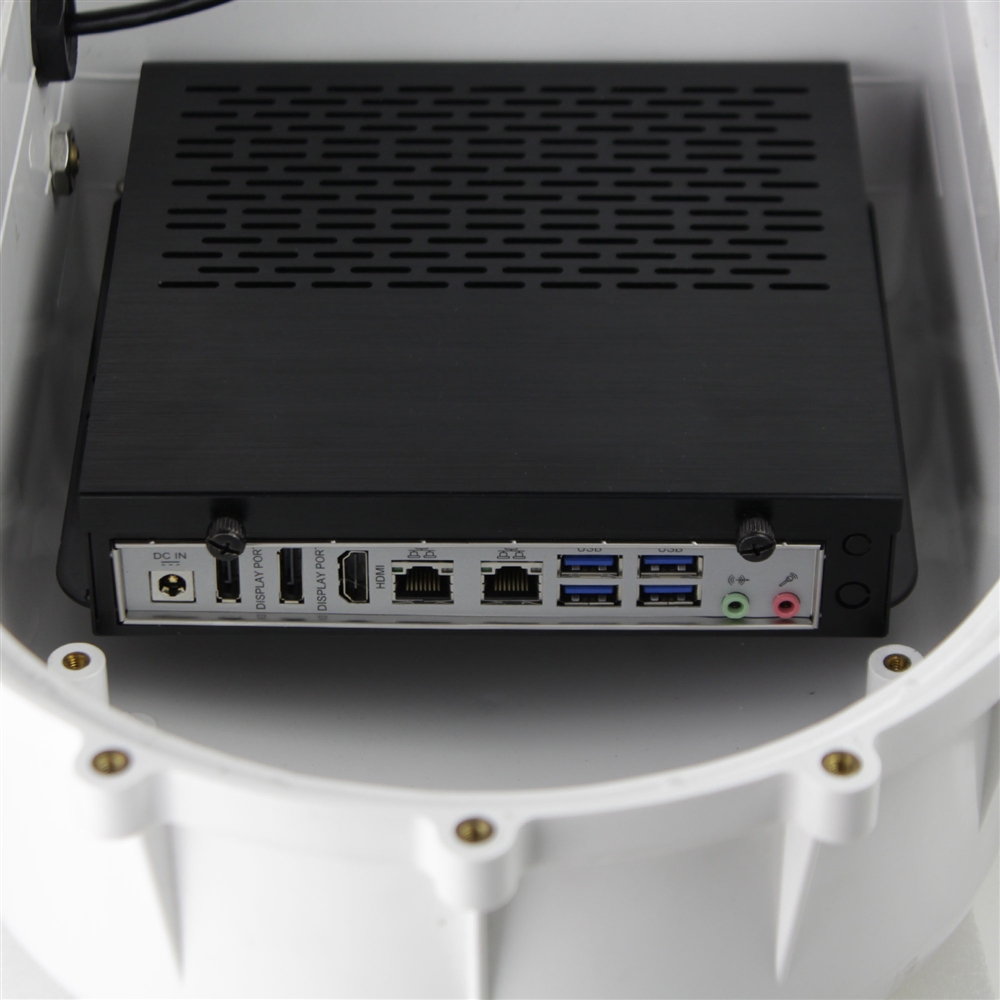

The Network ARP Scanner application also allows for name resolve overriding for each selected network interface to be ARP scanned.

An asynchronous-capable DNS client utility: adnsresfilter is used and configured by this widget and by some NST WUI applications that require a large number of name resolution requests like the Network ARP Scanner. This can be quite useful when one needs to use an alternative DNS client name server configuration without changing the NST system default DNS client configuration on a multi-homed NST system. One can use the widget to override the system default name servers typically found in file: " /etc/nf" for a specific network interface. This tool can be used by NST WUI applications that require host name resolving on an individual network segment. The NST network tools widget: " NIC Name Resolver Override Settings" is shown below. NST Network Tools Widget - Default Name Resolver Override Settings, Action - Active Connections: DNS Settings Option Tools => Network Widgets => DNS Settings).

One can also bring up the Default Name Resolver Override Settings widget through the NST Navigation Menu (i.e. You can use the Test Resolver button to perform a reverse lookup of a IPv4 to verify that your DNS settings are working as expected. The " DNS Settings" button found in the Options panel was clicked on to bring up this widget and is displayed below. The Active Connections Monitor application also allows for name resolve overriding. An asynchronous-capable DNS client utility: adnsresfilter is used and configured by this widget and by some NST WUI applications that require a large number of name resolution requests like the Active Connections Monitor. This can be quite useful when one needs to use an alternative DNS client name server configuration without changing the NST system default DNS client configuration. One can use the widget to override the system default name servers typically found in file: " /etc/nf". This tool can be used by NST WUI applications that require host name resolving. The NST network tools widget: " Default Name Resolver Override Settings" is shown below.
#NSSTPLUGIN NETWORK VIDEO TOOLKIT HOW TO#
See page: How To Use The NST CloudShark Upload Manager. Tools => Network Widgets => IPv6 Address). One can also bring up the IPv6 Address Tools widget through the NST Navigation Menu (i.e. The Capture menu entries are also shown below with the Detect Sniffer6 tool highlighted. Secondly, the alive6 network utility (Menu: Scan => Alive6) was used to show all active and responding IPv6 addresses on the network segment for the selected interface: p5p1. This revealed the IPv6 Address Tools widget.įirstly, the ipv6calc utility (Menu: Information => IPv6Calc) was used to show information about the IPv6 address. The IPv6 Address: " fe80::e269:95ff:feb1:6ebf" located on the NIC Adapter widget top banner was then clicked on. This popped up the NIC Adapter widget for the p5p1 network interface. The p5p1 network interface label to the right of the " NST IP Address" on the NST Start Page was first clicked on. In this use case, the IPv6 Address Tools widget will be demonstrated. NST Network Tools Widget - IPv4, Action - ICMP Ping to IPv4 Address: "24.24.52.130" Other network tools widgets for setting DNS overrides globally or for each network interface and a CloudShark Upload Manager are available. An NST Shell Console Editor is also available for command replay and option modifications. An NST Shell Console output area is attached and used for action results. See the NST Shell Console Command Reference Page for supporting information.Įach tools widgets has a collection of specific predefined actions that can be executed. Once the widget is displayed, you can perform a variety of related actions using the network entity. Each NST WUI pages which display network addresses or host names will allow you to click on the network entity to bring up the appropriate network tools widget.
#NSSTPLUGIN NETWORK VIDEO TOOLKIT MAC#
The NST WUI includes pop-up network tools widgets for IPv4, IPv6, Host Names, and MAC addresses.


 0 kommentar(er)
0 kommentar(er)
